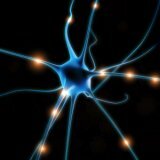Obsessive Compulsive Disorder or OCD: What It Is, Symptoms, and Treatment
Love for order and cleanliness is part of most people's lives. But sometimes these habits cross the fine line that separates the normal state of the psyche from its pathology. Such people suffer from obsessive compulsive disorder, or OCD for short. Also, this pathology is called obsessive-compulsive disorder is a mental illness. What are the reasons for the appearance of this pathology? What methods of treatment are offered by doctors, we will consider later in the article?
Content
- OCD: a definition of the term
- What are obsessive states?
- The causes of obsessive-compulsive disorder
- History of OCD therapy
- OCD symptoms
- OCD therapy
- Videos related to obsessive-compulsive disorder
OCD: a definition of the term
Obsessive-compulsive disorder (obsessive-compulsive disorder) belongs to a symptomatic group, the name of which comes from two Latin words: obsession and compulsio. The first word is translated from Latin as encirclement or blocking, and the second - as "forcing."
Obsessive desires, which are a type of obsessive states (obsessions), are characterized by the appearance of irresistible obsessive drives that appear in the patient's brain regardless of the patient's emotions, will and intellect person. The patient himself often perceives the essence of his compulsive drives as morally or religiously unacceptable.
Compulsions (which distinguishes them from impulsive drives) never become reality, never come true. The patient himself considers his instincts to be wrong, impure or contrary to his nature - and therefore it is very difficult to experience. In turn, the fact of the appearance of unnatural desires provokes the emergence of an obsessive feeling of fear in the patient.
The term compulsions often refers to obsessive movements or rituals performed by a person day in and day out.
Domestic psychiatrists define obsessive states as pathological phenomena of the psyche, the essence of which is approximately as follows: the patient's consciousness, certain psychopathological phenomena arise, which are invariably accompanied by a feeling coercion. Obsessive states are characterized by the appearance of desires and aspirations contrary to will and reason, which a person is clearly aware of, but does not accept and does not want to realize.
The above-mentioned obsessive desires and thoughts are deeply alien to the psyche of a particular person, but he himself is not able to neutralize them. This situation provokes the occurrence of sick with depression, unbearable anxiety, an increase in emotionality, contrary to any logic.
The complex of symptoms listed above does not affect the patient's intellect, do not reduce the productivity of his thinking, in general, being rather vices of the subconscious than of consciousness. However, the appearance of such symptoms significantly reduces a person's performance and negatively affects the performance of his mental activity.
All the time, while a person is susceptible to the mental pathology under consideration, a stable critical assessment is held to the emerging obsessive thoughts and ideas.
What are obsessive states?
- Phobias (intellectual-affective);
- Compulsions (motor);
- Affectively indifferent (abstract).
Most of the clinical cases combine a number of obsessive phenomena. Quite often, the allocation of abstract, or affectively indifferent obsessions (which include, for example, arrhythmomania), turns out to be irrelevant to the real picture of the disease. A qualitative analysis of the psychogenesis of a neurotic state usually allows one to see the basis of pathology in depression.
The causes of obsessive-compulsive disorder

The most common preconditions for obsessive compulsive disorder are genetically due to the peculiarities of the psychoasthenic structure of the personality, as well as severe problems in the family circle.
The simplest obsessive states, along with psychogenic causes, have cryptogenic causes that hide the reason for the occurrence of pathology. Most often, obsessions affect people with a psychoasthenic mindset. In such cases, obsessive fears are most important.
Other factors in the onset of obsessive compulsions:
- Neurosis-like states with sluggish schizophrenia.
- Epilepsy.
- Endogenous depression.
- The recovery period after somatic diseases and traumatic brain injury.
- Nosophobic or hypochondriacal-phobic syndrome.
Read also:Subarachnoid hemorrhage
Most scholars of this phenomenon believe that the genesis of OCD is a kind of sad play in which the main role is played by either trauma to the psyche, or stimuli of conditioned reflexes that coincided with the factors causing fear - and therefore became pathogenic. Summarizing the above, it is worth noting that obsessive states in general provoke situations of contradiction between the environment and a person's ideas about it. However, quite often obsessions affect psychoasthenic personalities or people with an extremely contradictory character.
Today, all of the above obsessive states are integrated into the International Classification of Diseases under the name OCD (obsessive compulsive syndrome).
OCD is repeatedly diagnosed and has a high incidence rate, so if symptoms occur, it is urgent to involve psychiatrists in the treatment of pathology.
To date, experts have significantly expanded their understanding of the etiology of the disease. The most important factor is the direction of therapy for obsessive-compulsive disorders to serotonergic neurotransmission. This discovery is a revolution in the treatment of the disease in question, it makes it possible to cure millions of cases around the world.
How is it possible to replenish the serotonin deficiency in the body? Tryptophan, an amino acid found only in food, can help in this matter. Once in the body, tryptophan is converted to serotonin. The process of transformation of these chemical elements causes a state of mental relaxation in a person, which turns into a feeling of emotional stability and well-being. Further transformation of serotonin converts it into melatoninwhich helps to normalize the body's biological clock.
The discovery of intense serotonin reuptake inhibition (SSRI) is the first step towards the most effective therapy for obsessive compulsive disorders. This fact was the first step in a revolutionary transformation in the course of clinical trials, during which scientists noted the effectiveness of selective inhibitors.
History of OCD therapy
Obsessions and their treatment have been of interest to scientists since the 17th century. The first mentions of studies of this pathology date back to 1617. The year 1621 is marked by the work of E. Barton, in which the researcher described the obsessive fear of dying. In 1829 g. The works of F. Pinel, important for further breakthroughs in the development of the topic. The term "obsessive representations" was introduced into Russian psychiatry by I. Balinsky. In 1871 g. Westphal first voiced the name "agoraphobia", meaning the fear of being in human society.
M. Legrand de Sol in 1875, exploring the dynamics of the development of the picture of the incidence of obsessive-compulsive disorders, combined with insanity type "hesitation plus sensual delirium" determined that the course of this kind of disease is aggravated: a symptomatic picture of the substitution of obsessive vibrations the fear of touching the surrounding things and furnishings is gradually supplemented by rituals of movement, which then accompany the patients throughout life.
OCD symptoms

The main symptoms of a disease called obsessive compulsive disorder are constantly appearing thoughts and aspirations (obsession), as well as motor rituals (compulsion), which the sick person cannot neutralize on one's own.
The core of any clinical picture of OCD is compulsion syndrome, which is a collection of fears, doubts, feelings and memories that arise regardless of the patient's desire and contradict his picture the world. The patient realizes the incorrectness of the thoughts and feelings that have arisen, and is extremely critical of them. Realizing that the ideas, feelings and desires that arise in their brain are illogical and unnatural, the sick are absolutely powerless in attempts to overcome them. The whole complex of obsessive ideas and aspirations is perceived by a person as something coming from within, but contrary to his very personality.
Read also:Multiple sclerosis: causes and symptoms
Quite often, obsessions in sick people are transformed into the obligatory performance of certain rituals that alleviate anxiety (for example, unreasonably frequent washing of hands or changing clothes in order to prevent an almost mythical infection with a dangerous disease, or wearing a gauze bandage for this the same reason). Making attempts to drive away obsessive urges, the patient introduces himself into a state of internal contradiction, which significantly increases the level of anxiety. That is why the pathological conditions described above are included in the group of neurotic disorders.
The incidence of OCD among the population of developed countries is extremely high. People with obsessive compulsive disorder, according to statistics, make up about 1% of patients in psychiatric hospitals. Moreover, this pathology is equally typical for men and women of all ages.
This disorder is characterized by the logically inexplicable appearance of painful thoughts, which the patient passes off as images and ideas produced by his consciousness. Thoughts of this kind penetrate into the consciousness of a person by force, but he tries with all his might to resist them.
It is the feeling of inner compulsive conviction, combined with an ardent desire to counteract it, that speaks of the development of OCD. Sometimes obsessive thoughts take the form of separate lines or phrases. For the patient, they have a shade of indecency or even be unnatural or blasphemous.
What exactly are the images evoked by obsessive ideas and aspirations? Usually these are incredibly lively, voluminous scenes of violence or sexual perversion that cause fear or disgust in the patient.
Obsessive impulses are thoughts that induce a person to perform potentially dangerous, shameful, or damaging actions. For example, jumping out into the roadway in front of a moving car or shouting out an obscene phrase loudly in decent society.
Obsessional rituals are compulsively repetitive actions that the patient performs to drown out impulses of anxiety and fear. For example, it can be repeated washing of hands (up to several dozen times), repetition of certain phrases or words, as well as other actions that do not make sense. A certain percentage of the sick are subject to persistent obsessive thoughts about the imminent infection of a serious illness.
Quite often, obsessive rituals involve the constant unfolding of the wardrobe in a complex system. Also, patients may experience an irresistible desire to repeat ritual actions a certain number of times. If this does not work, the cycle repeats from the beginning.
The patients themselves, admitting the illogicality of their actions, suffer greatly from this and try to hide their habits with all the silts. Some even consider their rituals to be symptoms of mental confusion. That is why obsessive thoughts and rituals make the patient's daily life unbearable.
Obsessive thoughts are something like the patient's endless dialogue with himself. Its theme can be the simplest everyday action, but deliberation drags on for a long time. People who are subject to obsessive reflections endlessly weigh the pros and cons, they are unable to make a decision. We are talking about actions that can be performed incorrectly (for example, turning on the microwave or computer), or not finished, and can also pose a danger to the sick or other of people.
Obsessive thoughts and compulsive rituals can become stronger in an environment when the patient is surrounded by objects and phenomena provoking such thoughts. For example, in the kitchen, where there are forks and knives, thoughts can amplify and harm yourself or others. In this case, the symptoms of OCD are similar to those of phobic anxiety disorder. In general, anxiety plays a significant role in the clinical picture of OCD: some thoughts and actions muffle it, others make it grow.
Read also:Serotonin Syndrome
Obsessive or obsessive states can be figuratively sensual (with the development of a painful effect) or be affectively neutral in nature. Sensory obsessive states usually include obsessive disgust, remembering, ideas, hesitations and actions, unnatural drives, as well as the fear of committing simple everyday things.
- Obsessive doubts are the patient's lack of firmness in their own actions and decisions, not based on reason and logic. At home, these can be concerns about a closed door, a blocked window, an iron or stove turned off, a closed tap, and so on. At work, an obsession can make a person double-check the correctness of the writing of reports and other documents, addresses and numbers ten times. It is important that many checks do not make doubts disappear, but only add anxiety to a person.
- Obsessive memories are all the time images of terrible or shameful events that have happened to him, which a person tries to forget, but can not.
- Obsessions are "internal impulses" to commit dangerous or violent acts. The sufferers themselves realize that these impulses are wrong, but cannot free themselves from them. Obsessive drives can take the form of a desire to brutally kill a partner or child, push a friend under the car, and so on.
- Obsessive representations can take many forms. Sometimes sick people very clearly see the result of the realization of their obsessive drives (they see in the colors of the cruelty they dreamed of; and they see them already perfect). Sometimes, OCD sufferers replace reality with invented absurd situations (a person is sure that his dead relative is still buried alive).
OCD therapy

Complete relief from the symptoms of obsessive compulsive disorder in medical practice is extremely rare. It seems more realistic to stabilize the symptoms and alleviate the patient's condition by improving the quality of his life.
In the process of making a diagnosis of OCD, it is extremely difficult to distinguish from Tourette's syndrome or schizophrenia. This is why a qualified psychiatrist should diagnose OCD.
The first thing to do to stabilize a patient with OCD is to relieve him of all possible stress. Further, drug therapy is used, aimed at serotonergic neurotransmission.
Medication for obsessive-compulsive disorder (OCD) is the most reliable method to muffle OCD symptoms and improve the patient's life. Therefore, at the slightest suspicion, it is necessary to visit a psychiatrist, and refrain from self-medication - this can cause even greater harm to health.
Obsessions and obsessions often involve family members and relatives in their rituals. The latter in this case need to be firm, without losing sympathy.
What medications do people with obsessive compulsive disorder take?
- Serotonergic antidepressants;
- Small antipsychotics;
- Anxiolytics;
- MAO inhibitors;
- Beta blockers;
- Triazole benzodiazepines.
The basis of therapy for the disorder in question is atypical antipsychotics (olanzapine, resperidone, cretiapine) together with antidepressants (tianeptine, moclobemide) and benzodiazepine derivatives (clonazepam, alprazolam).
The most important thing in the successful therapy of the pathology in question is the establishment of contact with the patient and his firm belief in the possibility of recovery. It is also important that the person overcome their prejudices against psychotropic drugs. In this case, all kinds of moral support and faith in a successful outcome of treatment are required from the relatives of the sick person.



